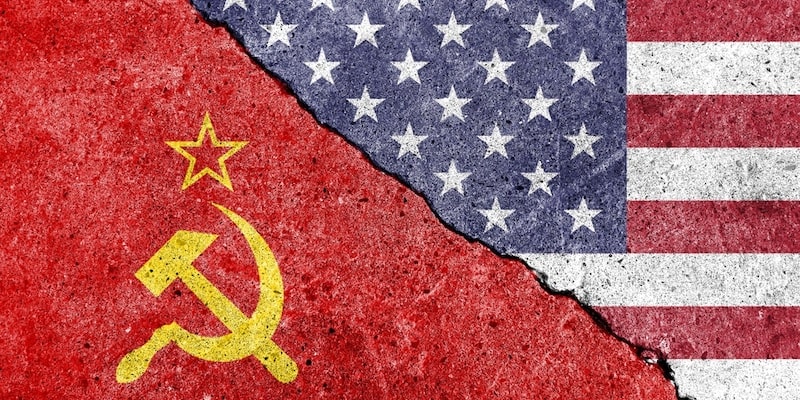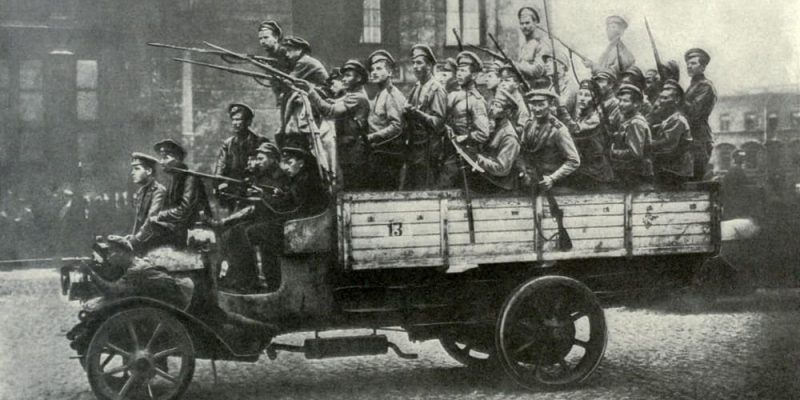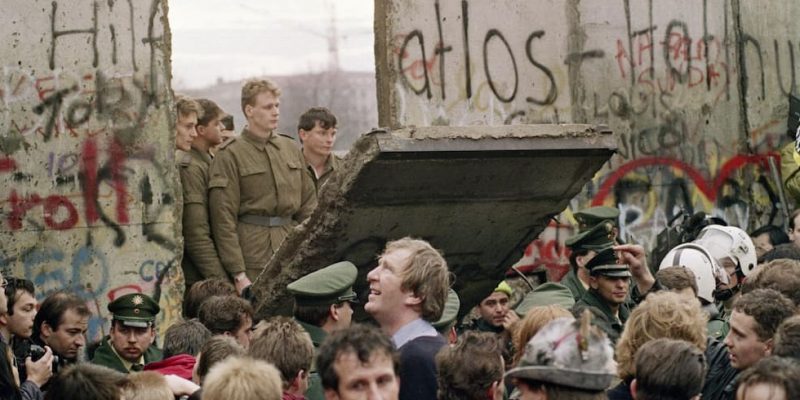We explain what the Cold War was, its antecedents, causes and consequences. Also, what was the event that marked its end.

What was the Cold War?
The Cold War was one of the most important conflicts of the 20th century. It confronted the two superpowers of the second half of the 20th century: the Union of Soviet Socialist Republics (USSR) and the United States. It was a conflict for the supremacy of the world and the imposition of the political model economic, ideological and cultural that each country defended: communism (USSR) and capitalism (USA).
The term “Cold War” was used by the English writer George Orwell (1903-1950) in a 1945 essay titled You and the Atomic Bomb (“The atomic bomb and you”), published in the newspaper Tribune. It was later popularized to describe the particularity of the conflict, in which The Soviet Union and the United States never confronted each other militarily directly.
The Cold War was characterized by diplomatic disputes, the arms and space race, the constant mutual threat and the attempt to influence other countries. This included intervention in subsidiary wars, that is, war conflicts in third countries in which each power supported one of the opposing factions.
It influenced military conflicts such as the Korean War (1950-1953), the Sinai War (1956), the Vietnam War (1955-1975) and the Afghan-Soviet War (1979-1989).
The Cold War involved a large part of the world, which it divided into two opposing blocs throughout its more than 40 years of duration.
The Cold War began after the end of the Second World War in 1945 and culminated in December 1991 with the political dissolution of the Soviet Union. It had stages of hostility and stages of détente and was the time in which the fear of a nuclear war first arose, which if it had occurred would have had devastating effects.
Key points
- The Cold War was a confrontation between the Western or capitalist bloc (led by the United States) and the Eastern or communist bloc (led by the Soviet Union).
- It lasted more than forty years, between the end of World War II in 1945 and the dissolution of the USSR in 1991.
- The two powers never faced each other directly militarily but supported the opposing sides in other countries' wars.
- Some important events were the Korean War and the Vietnam War, the construction of the Berlin Wall, the Cuban Missile Crisis, and the arms and space race.
Cold War Background

Tensions between the Russian communist government and Western capitalist powers began shortly after the October Revolution of 1917, which established a Bolshevik government in Russia. This fact caused a civil war in which some foreign governments (such as the United States) supported the counterrevolutionary groups.
However, The direct antecedents of the Cold War are found in World War II (1939-1945) when an alliance occurred between the British Prime Minister Winston Churchill (1874-1965), the American President Franklin Delano Roosevelt (1882-1945) and the Soviet leader Joseph Stalin (1878-1953), to confront the troops of the Nazi Germany and the expansionist pretensions of Adolf Hitler (1889-1945).
This alliance was functional until the defeat of Germany in 1945. Then, The political-territorial division of Germany was agreed into four occupation zones: three western run by the United Kingdom, the United States and France (which were later unified among themselves), and an eastern area occupied by the Soviet Union, which also controlled the territories of Eastern Europe that had been invaded by the Red Army (Soviet) to expel the Nazis from them.
Already in 1946, Churchill used the term “iron curtain” to describe the line that separated Europe into two blocks that later spread to other regions of the world:
- The Western or capitalist bloc under the hegemony of the United States and made up of the countries that signed the North Atlantic Treaty (which gave rise to NATO).
- The eastern or communist bloc controlled by the Soviet Union and made up of the signatory countries of the Warsaw Pact.
Tensions between the Soviet Union and Western powers worsened when the American government promoted the Truman Doctrine (1947), which consisted of supporting countries facing communist insurrections. Added to this was a conflict when the Soviet government blocked the borders of the western sector of Berlin (occupied by the Western powers), an event known as the Berlin Blockade of 1948-1949.
Causes of the Cold War
The causes of the Cold War can be summarized as:
- The ideological opposition between the communist, one-party system led by the Soviet Union, and the capitalist, multi-party system led by the United States and the Western European powers.
- Anti-communist sentiment which spread throughout Europe and the United States after the October Revolution of 1917 and the outbreak of the Chinese civil war between communists and nationalists in 1927.
- Anti-capitalist propaganda in the Soviet Union that identified the United States and its allies as an imperialist and bourgeois danger.
- The collapse of Western Europe as a world power after the devastation caused by World War II, which led to the affirmation as superpowers of the United States and the Soviet Union, the two countries that led the victory against the Nazis.
- The tensions derived from the political-territorial distribution of Germany between the allied forces: the United States, the United Kingdom and France, on the one hand, and the Soviet Union, on the other.
- Soviet occupation of Eastern European territories previously conquered by the Nazis, which after their liberation by the Red Army came under the control of the Soviet Union through local communist governments and the maintenance of Soviet troops.
- The growing American interference in Europe the result of its role in the Second World War and the application of the Marshall Plan in the postwar period, an aid and financing program for European economic recovery. Countries under Soviet hegemony rejected aid from the Marshall Plan, which the Soviet Union considered an instrument of American imperialism.
Consequences of the Cold War

The main consequences of the Cold War were:
- The division of Europe and the rest of the world into two blocks dominated by the United States and the Soviet Union, which configured a bipolar world through alliances and control or influence over other countries.
- The arms and space race in which each power invested resources to surpass its adversary in the development of conventional and nuclear weapons and in the exploration of outer space, which led to important technological innovations also used in civilian life.
- The nuclear threat which spread fear of an atomic war with devastating effects. Such a war almost broke out during the so-called Cuban missile crisis in 1962.
- The outbreak of conflicts, wars and military coups in other countries especially in Asia, Latin America and the Middle East, where each power supported one side or another to extend its global hegemony. These events included the Korean, Vietnam, and Afghan wars, Soviet support for Fidel Castro's regime in Cuba, and American support for some Latin American dictatorships.
- The breakup between China and the Soviet Union starting in the 1960s, and the division of the communist world between the Soviet and Maoist sides. This allowed for a significant rapprochement between the United States and China during the 1970s.
- The reconfiguration of world power after the collapse of the Soviet Union in 1991 when the United States became the world's only superpower and NATO expanded with the accession of countries that had abandoned communism.
- The ideological disillusionment of leftist sectors in the face of the Soviet defeat the widespread idea that communism had failed and the consolidation of capitalism worldwide at the end of the 20th century.
End of the Cold War

The Cold War formally ended with the fall of the Soviet Union in 1991 after years of crisis and a significant reduction in its international influence. Already in the late 1980s, its ability to provide resources and exert influence on the socialist nations of Eastern Europe had been severely limited.
The processes of change undertaken during the mandate of Mikhail Gorbachev in the late 1980s, known as perestroika (restructuring) and glasnost (openness), they tried to avoid the economic and social collapse of the Soviet State. However, the political opening stimulated the manifestation of social discontent against the regime and the restructuring aggravated the economic crisis, which was internationally interpreted as a recognition of the failure of communism.
In 1989, a series of revolutions and political changes occurred in Eastern Europe that caused the collapse of communism in those countries, including the fall of the Berlin Wall which led to the reunification of Germany a year later. These events charted the path towards democratic systems with free market economies.
Almost simultaneously, many of the nations that made up the Soviet Union began their respective independence processes, which produced the dismemberment of the Soviet State after seventy years of existence.
The fifteen Soviet republics became independent states. The Russian Federation adopted a market economy model and a multi-party democratic system, and The United States established itself as the greatest world power. This event marked the end of the Cold War.
document.addEventListener(“DOMContentLoaded”, (e) => { var sliderContainer, slider; sliderContainer = document.getElementById(‘block_2363bb945c4112ae4828a8202738cd41’); if (typeof initSlider !== ‘function’) { console.log(‘Swiper haven\’t been loaded’); sliderContainer.className += ‘ fw scroll-snap’; return; }; options = { direction: ‘horizontal’, speed: 1000, slidesPerView: ‘auto’, // slidesPerGroup: 1, centerInsufficientSlides: true, // centeredSlides:true, spaceBetween: 15, breakpoints: { 720: { // centeredSlides: false, // slidesPerGroup: 2, spaceBetween: 25 }, }, pagination: { el: ‘.swiper-pagination’, type: ‘bullets’, clickable: true }, } slider = initSlider(sliderContainer, options); })
References
- Britannica, Encyclopaedia (2023). Cold War. Encyclopedia Britannica. https://www.britannica.com/
- Powaski, R. E. (2000). The Cold War: United States and the Soviet Union, 1917-1991. Criticism.
- Veiga, F., Da Cal, E. & Duarte, A. (2006). The simulated peace. A story of the Cold War. Alliance.





